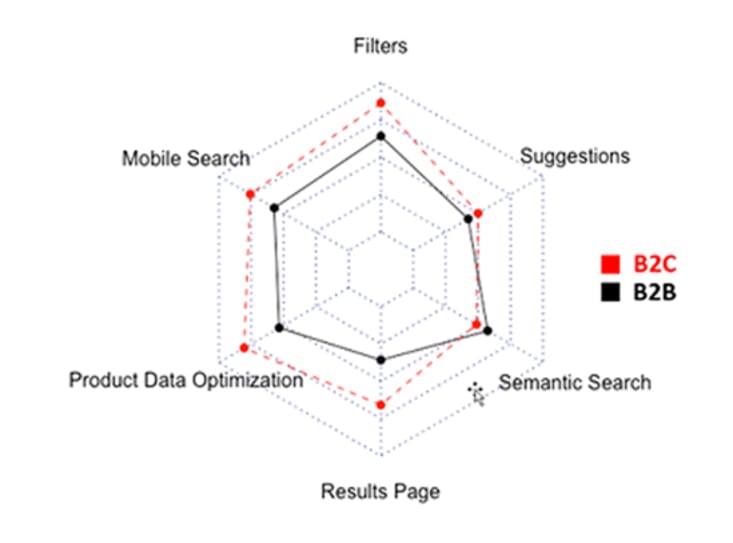The criteria within the results page cluster have to do with the presentation of products and information after a search is submitted. These features include the sorting of listings by multiple parameters, automatic redirects to categories or content, and the results of searches for non-product content.
The cluster also includes the zero-results page, which provides guidance when the search function is unable to return any result. When a user is not offered any content that is relevant to their initial query, it can be a frustrating experience that may push some customers to abandon that site completely. Given that 90% of B2B customers research 2-7 websites before making a purchase, it is extremely important that zero-results pages always offer users a way to move forward instead of providing reasons to switch to a competitor’s website.[2] Zero-results pages can be helpful rather than harmful by offering search tips, category links, product suggestions, and customer support contact information. These are all simple additions that can have an impact on conversion rate, yet almost 80% of the B2B websites scored in our study did not offer an adequate zero-results experience. All these sellers are putting their customers at high risk for site abandonment should they make a search that doesn’t return results.
Another important, but often overlooked, aspect of the results page is non-product content results. This content can include information pages, such as return policies or account information, supplementary product information, such as manuals and safety sheets, as well as marketing content, such as blog posts. Of course, the most apparent goal of e-commerce websites is to showcase the products being sold, so it’s no surprise that product categories typically receive the prime navigation spots. Although this practice makes it easier for a user to find the products they want, it comes at the expense of convenient access to non-product content, which is consequently relegated to smaller, less visible sections of page layouts and may be difficult for many users to locate.
A simple compromise is to support searches for non-product content. Users will be able to easily search for the information they’re looking for, and the aesthetic minimalism of navigation and landing pages does not need to be sacrificed to do so. Customers have even begun to expect this feature on e-commerce sites, with usability testing showing that 34% of onsite searchers attempt to search for non-product content.[3] Many B2B websites, however, have failed to provide their users with this feature; our testing revealed that almost 40% of the B2B commerce sites scored have no ability to perform content searches at all.



